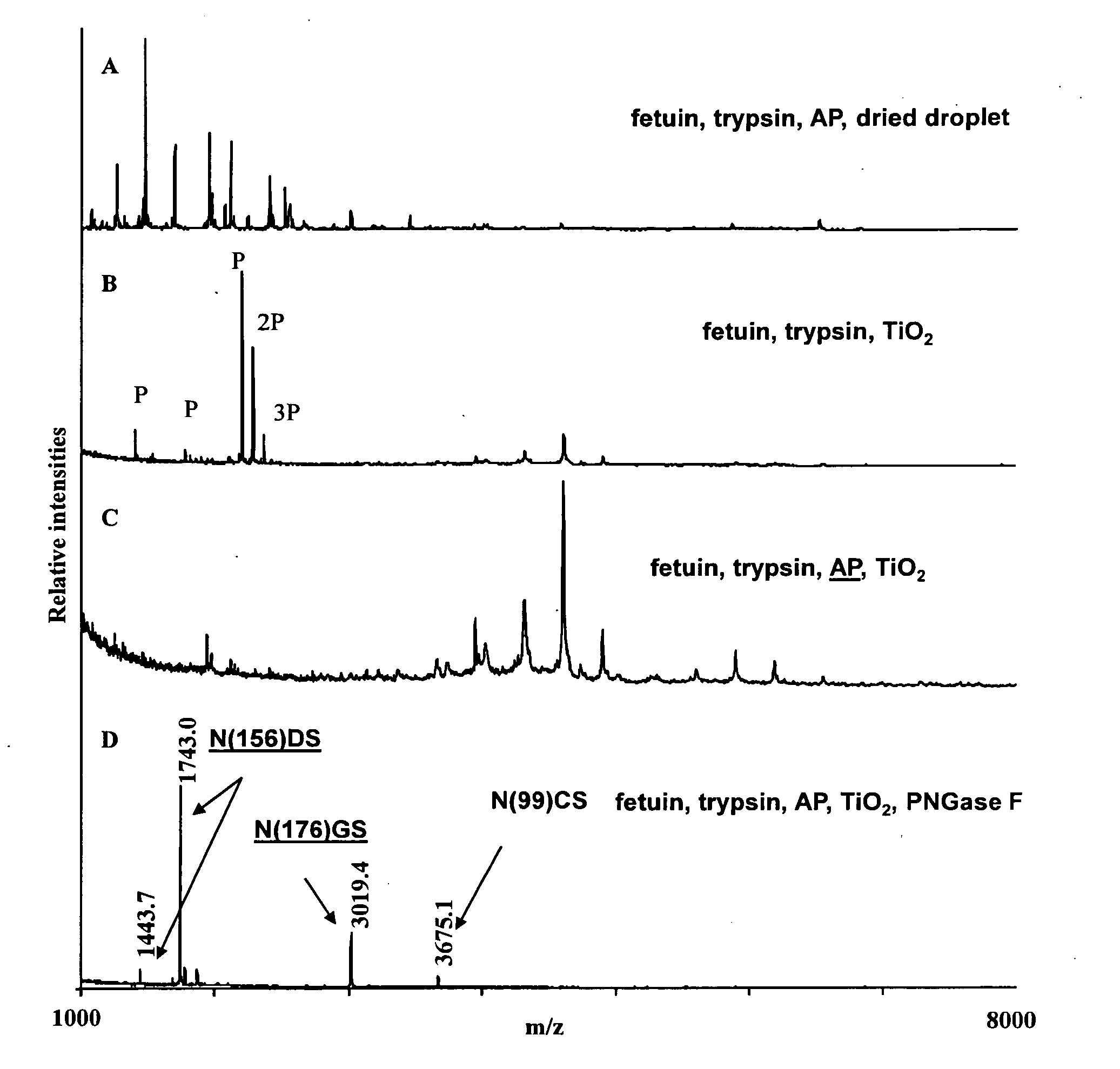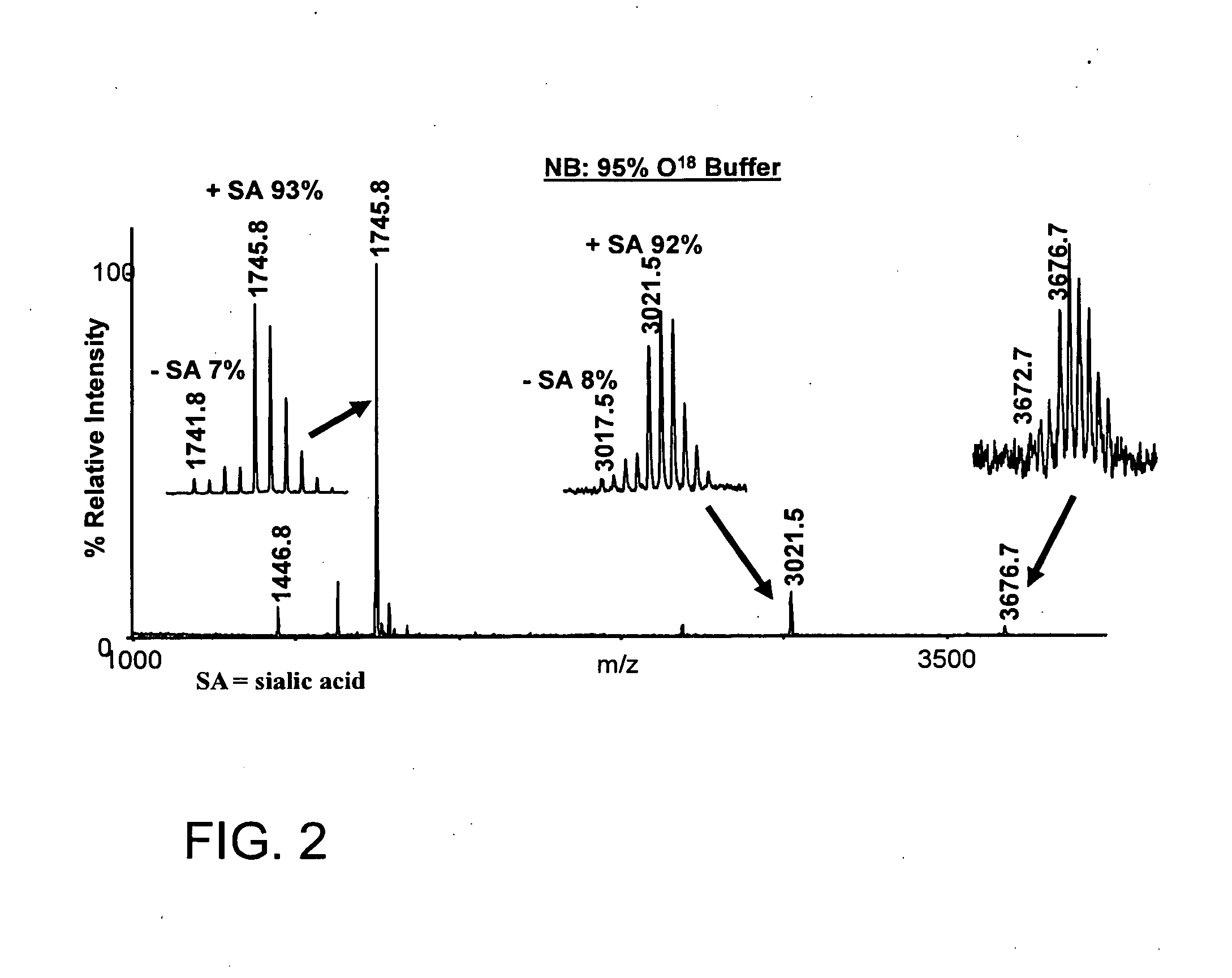Methods for isolation and analysis of sialylated and phosphorylated peptides
a technology of phosphorylated peptides and isolating methods, which is applied in the field of isolating and analyzing sialylated and phosphorylated peptides, can solve the problems of buffers that are not suited for mass spectrometry studies, expensive reagents, and inability to perform mass spectrometry studies
- Summary
- Abstract
- Description
- Claims
- Application Information
AI Technical Summary
Benefits of technology
Problems solved by technology
Method used
Image
Examples
examples
1. Isolation of Sialylated Tryptic Fragments of Fetuin with Titanium Dioxide Stationary Phase
Material
[0111]Modified trypsin was from Promega (Madison, Wis., USA). Fetuin was from Sigma. Poros R2 and Poros Oligo R3 reversed phase material were from PerSeptive Biosystems (Framingham, Mass.). GELoader tips were from Eppendorff (Eppendorf, Hamburg, Germany). 2,5-Dihydroxybenzoic acid (DHB) was from Fluka (St. Louis, Mo.). 3M Empore C8 disk was from 3M Bioanalytical Technologies (St. Paul, Minn., USA). Syringe for HPLC loading were from SGE (Victoria, Australia). The water was from a Milli-Q system (Millipore, Bedford, Mass.). Titanium dioxide beads were obtained from a disassembled TiO2 column (1350L250WO46 Titansphere, 5 micron, 250×4.6 mm) purchased from GL sciences Inc, Japan.
[0112]Bovine fetuin was dissolved in 50 mM NH4HCO3, pH 8, 10 mM DTT and incubated at 56° C. for 30 min. Iodoacetamide was added to the solution (final concentration 20 mM) and it was incubated at room temp...
PUM
| Property | Measurement | Unit |
|---|---|---|
| Fraction | aaaaa | aaaaa |
| Molar density | aaaaa | aaaaa |
| Molar density | aaaaa | aaaaa |
Abstract
Description
Claims
Application Information
 Login to View More
Login to View More - R&D
- Intellectual Property
- Life Sciences
- Materials
- Tech Scout
- Unparalleled Data Quality
- Higher Quality Content
- 60% Fewer Hallucinations
Browse by: Latest US Patents, China's latest patents, Technical Efficacy Thesaurus, Application Domain, Technology Topic, Popular Technical Reports.
© 2025 PatSnap. All rights reserved.Legal|Privacy policy|Modern Slavery Act Transparency Statement|Sitemap|About US| Contact US: help@patsnap.com



